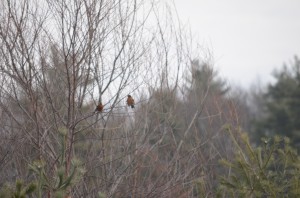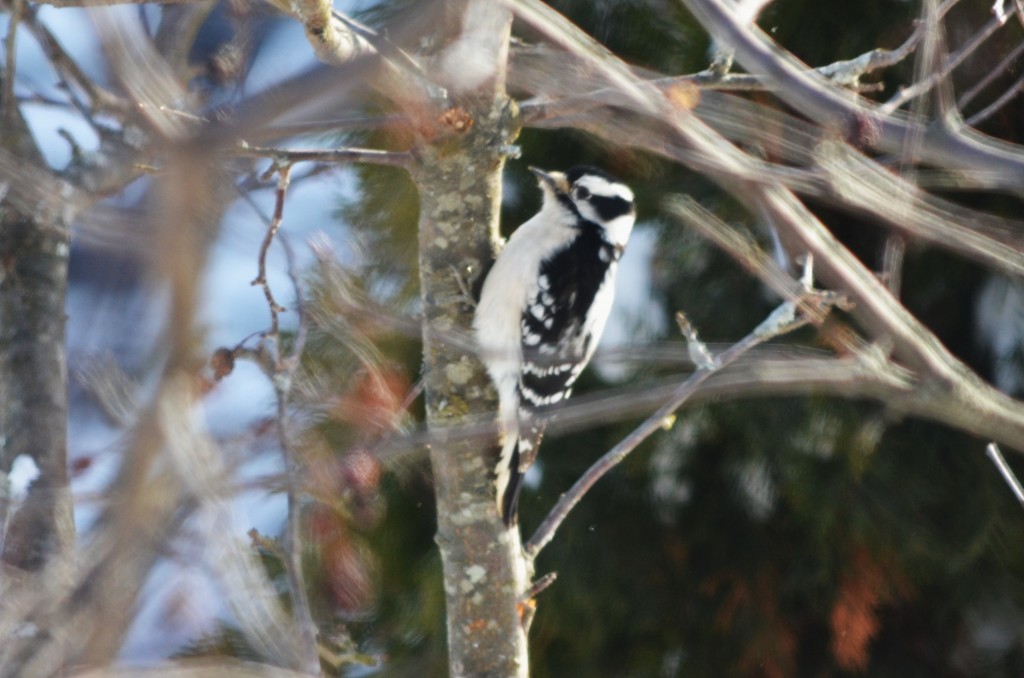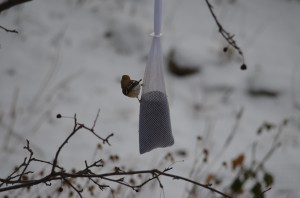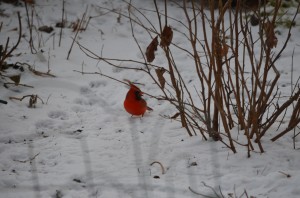We all have our dark pasts, our skeletons kept securely hidden in the closet. There are many many things I have done as a gardener that I am woefully ashamed of. The sin I shall reveal to you today is that of being a Zone -Pusher.
Here in the Burrow which is nestled sweetly in the heart of MA surrounded by conservation land, state forest and Rail Trails lives a dirty little secret….although the current USDA maps give our growing zone as a balmy 6a, due to our elevation and exposure it can be more accurately described as 4a. Depressing? Maybe, but like any other problem, awareness is half the battle. When we first moved here, I belived the lie, and in my zeal to garden on the edge and impress, I pushed the zone.
Let’s just say, it did not go well.
Woody plants ( like shrubs and trees) are the most valuable assets of our landscape. They cost the most, they grow the biggest, and they are the hardest to remove if and when necessary. Most trees and shrubs go through two stages of dormancy from late fall to spring. The first is called endo -dormany or acclimation, and it occurs when the combination of shorter days and cooler temps “tell” the plant to stop growing. This is why we get the colorful leaf displays as the trees quit sending the green chrlorophyl of life to their leaves so the less dominant colors show (then they fall of f and we grumble and rake). The plant is now entering a very deliberate and determined dormant period when no growth will occur.
While dormant, the plant is keeping track of how many hours the weather is above freezing, these hours are called chilling units. Each plant/ tree has a set number of chilling units its needs for it’s winter dormancy and it will remain completely free of any growth during that time. Only after it has tracked those required chilling units it will break endo -dormancy.( eg An apple tree may need 700 chilling units in the winter, so after the temp has gone above freezing that many hours …not in a row mind you, but as a total, it is now ready to break bud and welcome spring).
After the endo dormancy requirement has been met ,the plant/tree is in what is called eco- dormancy , in which it remains dormant SOLELY based on the cold weather. It does not matter if it is January or July, chilling units complete, the “real” is dormancy done. Warm weather that occurs after eco -dormancy has started will stimulate growth. Most trees that are hardy around here will break endo- dormancy in January.
Wild temperature swings that occur during this time when the tree has acclimated to growing weather again, say like the -15 to 56 we had in one 25 hour span one day last week, will severely stress the plant as it has no ability to re-acclimate to the really cold temps now, and death may very well happen.
Most woody plants also have a specific temperature that is their breaking point and below which they will die. A sort of combination of dormancy requirements and bottom temp will tell you how hardy a plant is in your area.
Adventurous gardeners find a thrill in trying to outwit these biological facts. They will plant a zone 7 tree( after systematically tracking the warmer more sheltered areas of their yard), then mulch like crazy over roots that were not meant for such conditions , then pray they will be rewarded in spring when the tree survives and they can show admiring visitors their amazing feat!
I shamefully admit I was one of them.
When I planted my first garden, I included a red bud , (cercis canadensis)…but not just any red bud, a cultivar called ‘Forest Pansy’ .Unlike the species, ‘Forest Pansy’ has dramatically colored leaves AND is a zone 6 (maybe even a 7 …don’t believe the lies on the tag), so successfully growing it here would elicit gasps of praise. It died.
Ever the attention seeker, I planted another. It survive three years, then it died as well.
Third time is the charm I have heard , so I tried again, and guess what? Yep, death.
Meanwhile , I was now left with a whole in the garden that was five years behind in growth than the rest , not to mention the digging and planting effort wasted. So , I finally gave in and planted a straight species Eastern red bud, hardy to zone 4 and have enjoyed it’s delightful red covered branches every spring since.
This very scenario was repeated ad naseum over the course of my first few years in the garden. Chances were taken, weather was brutal,many plants were lost. As I look back over my garden journals, I grieve my mistakes ( and the loss of cash). As an aside, the brutally cold weather and temperature swings are not unusual nor should they be unexpected, just in case you were going to tell me that this winter has been colder than the norm . It has not been, the meteorologists are more hysterical as a bunch, that’s all. It has been cold here for eons, know it ; embrace it …or move 😉
So now I am reformed. I live the cold, love the cold, plant for the cold. I do not seek out the pleasures of microclimates in the yard in which to experiment, I do not push the zone anymore and I am all the happier for it.
*this blog post is dedicated to my fellow zone pushers that have yet to see the light including one dear garden friend who has been taken to the dark side by a monkey puzzle tree araucania araucanca . Peace and blessings Paul, we will know very soon.
 Winter came back yesterday, it boy oh boy is it ever beautiful here. Wet snow fell throughout the day and is falling lightly again this morning covering everything in the most picture perfect fluff…quintessential New England!
Winter came back yesterday, it boy oh boy is it ever beautiful here. Wet snow fell throughout the day and is falling lightly again this morning covering everything in the most picture perfect fluff…quintessential New England!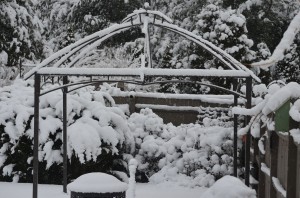
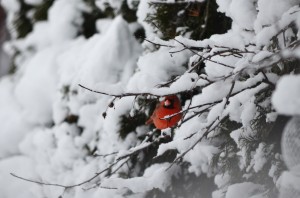 The flock of robins that have been visiting to strip the berries off the hollies are now in the crab apple trees,and the feeders have all been very busy. Looking out at the gorgeous view and the show being put on by our feathered friends while enjoying my morning coffee in the warmth house on a lazy Sunday is just about my favorite way to start a day. Add in the fact that later there will be chili simmering and playoff football TV, does life get any better?
The flock of robins that have been visiting to strip the berries off the hollies are now in the crab apple trees,and the feeders have all been very busy. Looking out at the gorgeous view and the show being put on by our feathered friends while enjoying my morning coffee in the warmth house on a lazy Sunday is just about my favorite way to start a day. Add in the fact that later there will be chili simmering and playoff football TV, does life get any better?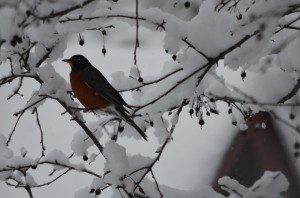
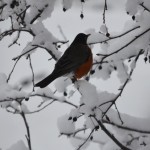
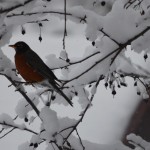

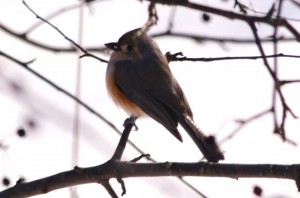
 from Bill for my birthday. I have traditionally used The Audubon Societies Field Guide for the Northeast, but found that especially little brown sparrow looking birds were very difficult for me to distinguish from one another , and I could also get tripped with male and female of a species, or even thrown off if there were young birds, or winter plumage, or really just about any slight deviation from the one photo in the Audubon book.
from Bill for my birthday. I have traditionally used The Audubon Societies Field Guide for the Northeast, but found that especially little brown sparrow looking birds were very difficult for me to distinguish from one another , and I could also get tripped with male and female of a species, or even thrown off if there were young birds, or winter plumage, or really just about any slight deviation from the one photo in the Audubon book.